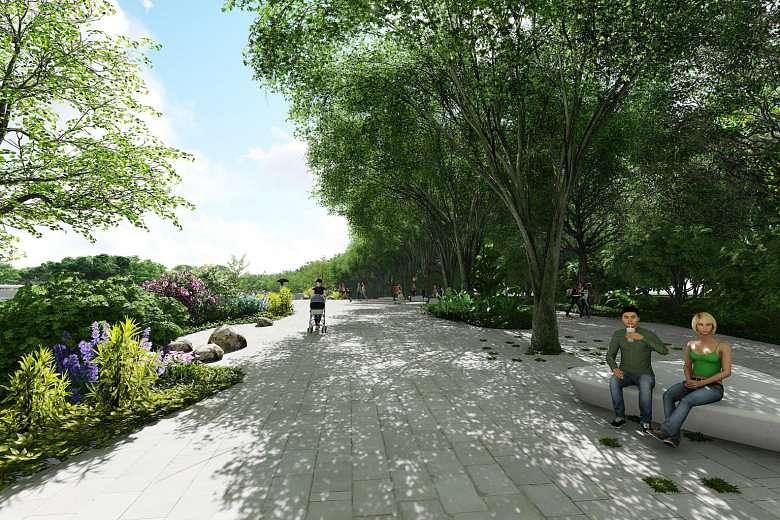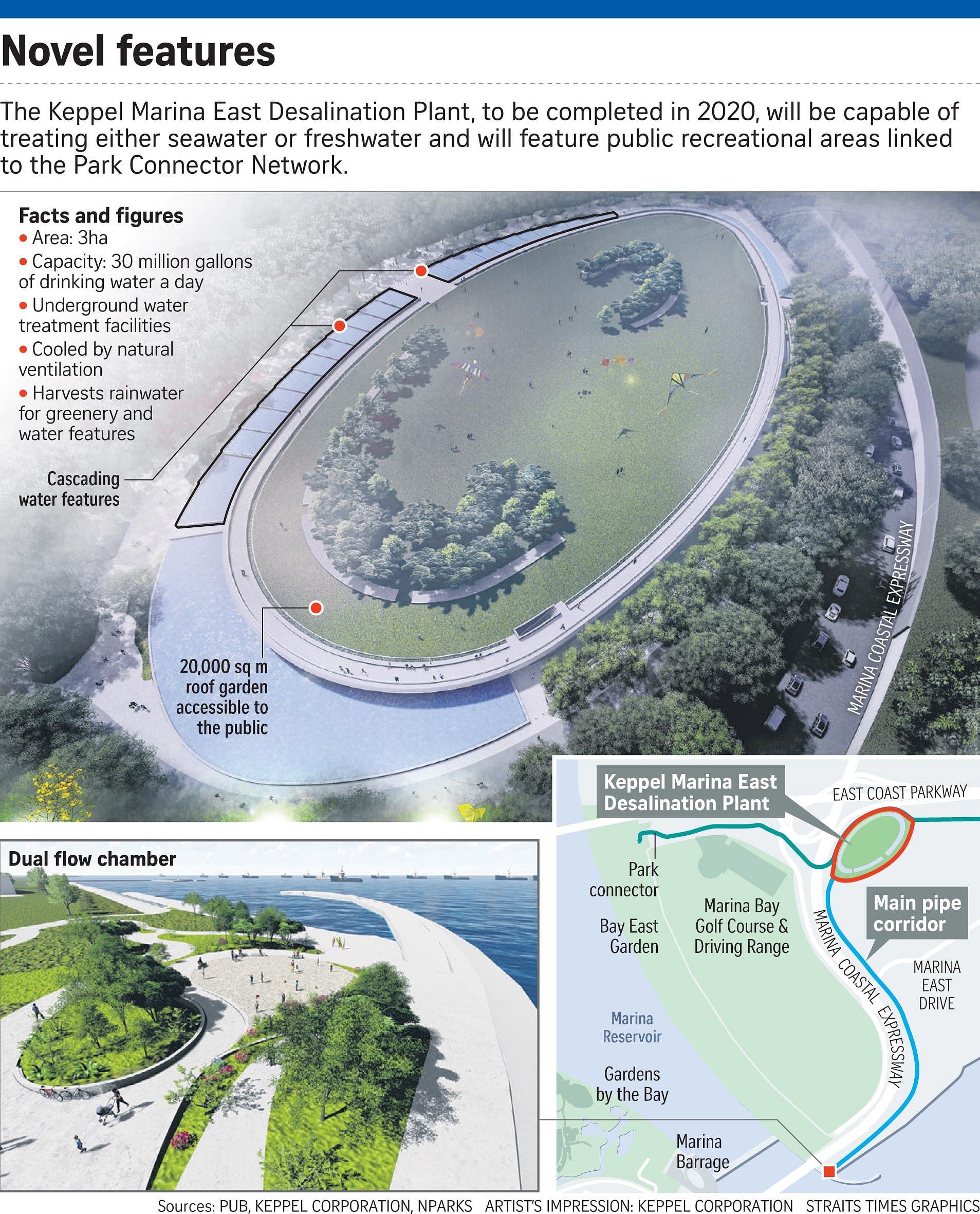Construction of what is believed to be the world's first desalination plant which can treat sea and fresh water at one place on a large scale started yesterday in Marina East.
When completed in January 2020, the water treatment machinery at the Keppel Marina East Desalination Plant will be housed underground, and visitors will be able to roam the 20,000 sq m roof garden - about the size of three soccer fields - which can take up to 700 people.
There will also be water cascades below the roof garden and walkways and seating areas shaded by trees near the plant.
The above-ground structure will blend seamlessly with the Eastern Coastal Loop of the Park Connector Network running next to it, said Keppel Infrastructure Holdings, which will build and operate the plant under the Design, Build, Own and Operate model.
The plant will also feature a viewing gallery with glass panels through which the desalination equipment can be observed, but visits will be by appointment to ensure security.
Keppel Infrastructure chief executive Ong Tiong Guan said the latest design challenges conventional ideas of how a desalination plant or infrastructural facility should look and function.
"Engineering and design excellence can go hand-in-hand as we push for sustainable urbanisation," he added.
Minister for the Environment and Water Resources Masagos Zulkifli, one of the seven senior government and Keppel officials at the symbolic ground-breaking ceremony at Marina Barrage, said desalinated water is a "weather-resilient source" crucial to a reliable water supply for the country. He added that public-private partnerships like the one that created the Keppel Marina East Desalination Plant have enabled Singapore to harness new technology cost-effectively.
The plant will increase water supply by 30 million gallons per day (mgd).
The first three plants in Tuas can produce 130mgd together.
A fifth desalination plant of similar capacity will also be built under a public-private partnership on Jurong Island by 2020.
One of the key processes in desalination is reverse osmosis, which forces water through a salt-retaining membrane at high pressure.
The latest plant sports a separate "dual flow chamber" with a valve that can switch between feeding seawater and reservoir water into the plant. This will depend on dry or wet weather conditions, Keppel and national water agency PUB said in a joint statement.
When reservoir water is used, lower pressure - and less energy - is needed for reverse osmosis, and fewer steps are required in the water treatment process as a whole.
Mr Masagos noted that the dual-mode desalination process took the Government years of research and testing to make it practical on a large scale. The process was first tested at a 1mgd pilot plant in Pasir Ris in 2007, which is still producing water that is channelled to a nearby Newater pipe.
With the impending first round of water price hikes in Singapore on Saturday, Mr Masagos reiterated that the "right-pricing" of water will enable continual investments in and maintenance of water infrastructure, which have helped Singapore avoid the water supply problems many countries face.
PUB had previously said it invested a total of about $7 billion in water infrastructure from 2000 to 2015, and will be investing $4 billion from this year to 2021.
When asked by reporters, Mr George Madhavan, director of PUB's 3P Network Department, said future dual-mode plants located at other coastal reservoirs are a possibility, among many others that the agency explores in its efforts to boost water security.
Desalination is expected to meet up to 30 per cent of Singapore's water demand by 2060, up from 25 per cent now. But the actual increase in desalination capacity will be more than what that figure suggests, as water demand is expected to double over that period.
Desalination, which debuted in Singapore in 2005, is one of four National Taps in the country's long-term water strategy, the others being reservoir water, imported water and Newater.
Singapore currently uses 430 million gallons each day, with around half of the demand met by imported water. The goal is to have desalination and Newater capacities meet up to 85 per cent of Singapore's water needs by 2060.




